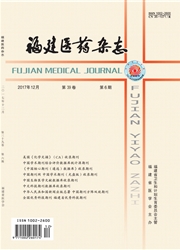

 中文摘要:
中文摘要:
目的探讨大鼠视神经损伤及修复过程中睫状神经营养因子受体(CNTFR)mRNA在视神经上的表达及意义。方法135只健康雄性斯普拉-道来(SD)大鼠,随机取45只作为正常对照组;另两组为视神经单纯切断组和视神经一坐骨神经吻合组,每组各45只大鼠。建立大鼠视神经单纯切断和视神经-坐骨神经吻合模型,分别于建立模型后3、7、14d取视神经组织,应用半定量逆转录-聚合酶链反应方法观察正常大鼠及各模型大鼠视神经上CNTFR mRNA的表达情况。结果正常大鼠视神经内CNTFR mRNA有少量表达。视神经单纯切断组,与正常对照组比较,其表达增加,有显著性差异。视神经剪断后桥接坐骨神经组,表达增加更明显,有显著性差异。结论视神经损伤后,可通过提高内源性CNTFR来应答轴索损伤,促进轴突再生,为外源性睫状神经营养因子(CNTF)的应用提供理论依据。
 英文摘要:
英文摘要:
Objective To investigate the mRNA expression of ciliary neurotrophic factor receptor (CNTFR) on optic nerves during injury and repair of optic nerves in rats. Methods One hundred and thirty-five healthy SD rats were randomly divided into 3 groups: 45 in the control group, 45 in the simply transected optic nerve group and 45 in the optic nerve-sciatic nerve anastomosis group. The simply transected and optic nerve-sciatic nerve anastomosed models were setup, and the optic nerve tissues of all of the rats were taken out after 3, 7 and 14 days, respectively; and the mRNA expression of CNTFR in the 3 groups were observed by semi-quantitative reversal transcription-polymerase chain reaction method. Results A minimum expression of CNTFR mRNA was found in the optic nerve of the control group, and the expression increased in the optic nerve of the simple transection group, while in optic nerve-sciatic nerve anastomosis group, the increase was the most evident. Conclusion Optic nerves can respond to axonal reaction by up-regulate endogenous CNTFR after the injury, which may provide a theoretic base for the application of the exogenous CNTF.
 同期刊论文项目
同期刊论文项目
 同项目期刊论文
同项目期刊论文
 期刊信息
期刊信息
